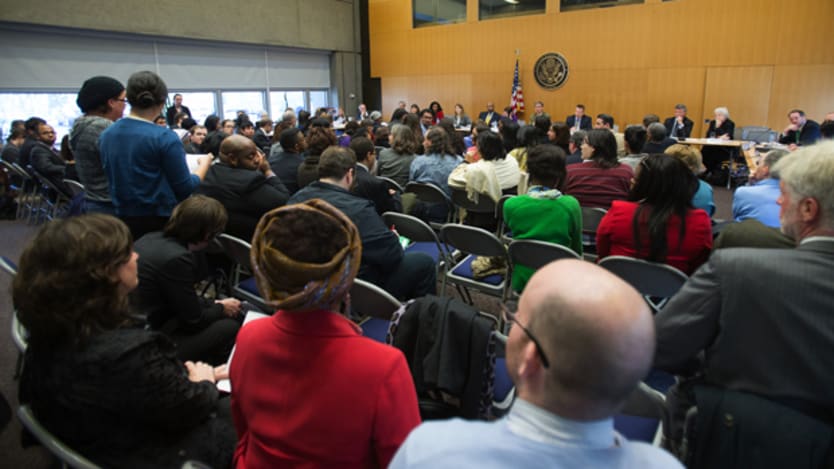
Why do so many civil society organizations fail? The problem might be their marketing strategy.
CSOs are often reliant on sustained donor support for their survival. And getting this support — especially in developing markets — can often prove too challenging.
That’s in part because civil society representatives tend to present the idea of civil society to government as “confrontational and oppositional,” Richard O’Sullivan, principal and founder of Change Management Solutions, said on Wednesday during a panel discussion hosted by the Society for International Development in Washington, DC.
“We don’t do a good job of selling why civil society is beneficial to the government,” he added.
O’Sullivan drew on his experience working with civil society partners to shift food safety standards out of the government in Kosovo. He explained that he and his partners went to the country’s ministries of finance and trade and outlined for them how such a shift would increase credibility, increase exports and raise tax revenues. Then they outlined what they needed from the government to do their job.
“I don’t think we do that enough,” he said.
O’Sullivan calls his strategy demand network mapping: the key is to understand who benefits from the service you hope to provide, and then build a broad coalition of supporters.
He explained that an organization that works in healthcare can appeal to businesses because their service raises productivity by keeping workers healthy. It can also increase the tax base and appeal to schools by helping to keep students in the classroom.
A CSO’s support network, O’Sullivan explained, can always be broadened. This is essential when asking for donor support, and especially important when asking governments for help.
But not all civil society leaders at Wednesday’s panel discussion were convinced this strategy would provide the magic bullet to their funding woes. Timothy Herrmann, with the the Association of Volunteers in International Service, stressed just how difficult it is to convince potential donors.
“It sounds nice in theory, but in practice, we have this problem all the time, and it’s very difficult to do what you’re saying,” said Herrmann to O’Sullivan after the panel discussion had ended.
O’Sullivan told Herrmann the trick is to monetize what your organization can offer, and present specific returns.
But Herrmann pointed out that civil society organizations and potential donors don’t always agree on what makes a worthwhile benefit. Nor, he underscored, do they agree on what it means to get a good return.
O’Sullivan remained unphased.
“What is your outcome?” he asked. “Give me one.”
Herrmann suggested having at least 60 percent of the local community in school.
“Ok, so you’re going to increase elementary school enrollment… now stand back and say, if we do that, who benefits? Well of course the kids… but you also improve the quality of the workforce, you increase the marketability of the community, so therefore municipal tax revenue is going to go up. The cost of recruiting and training workers is going to go down. You’re going to increase incomes and savings, so banks are going to come out. And you go to each one of them… and it works.”
Read more development aid news online, and subscribe to The Development Newswire to receive top international development headlines from the world’s leading donors, news sources and opinion leaders — emailed to you FREE every business day.








